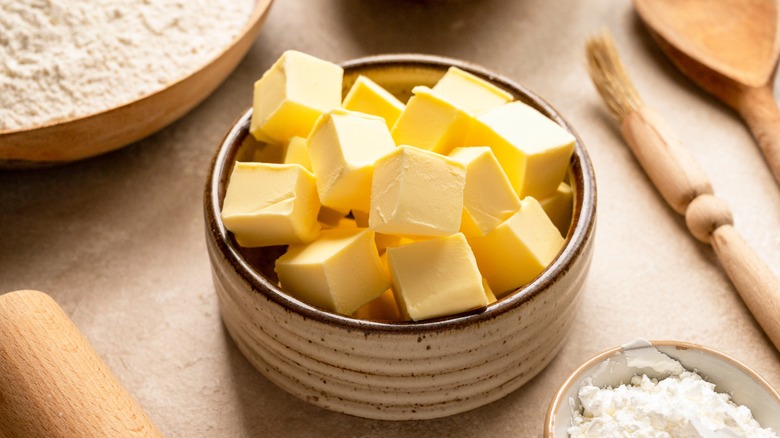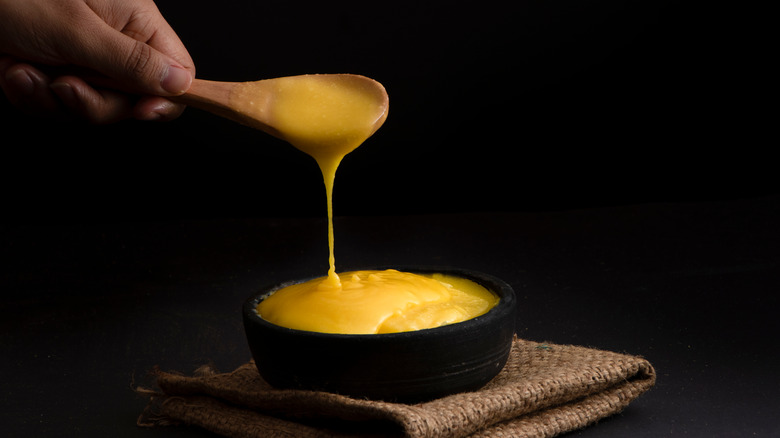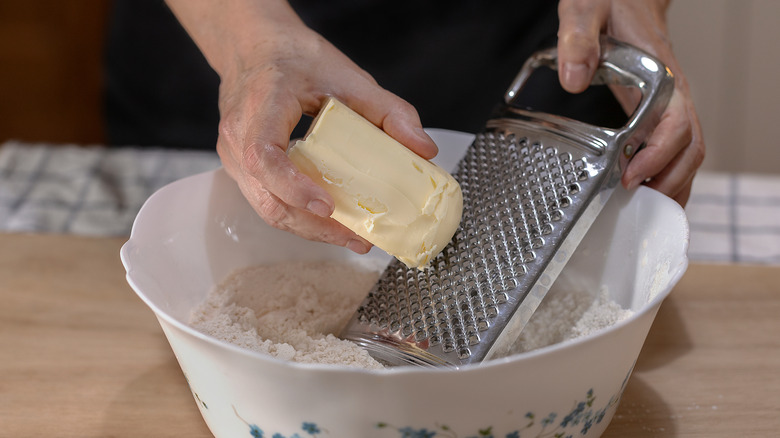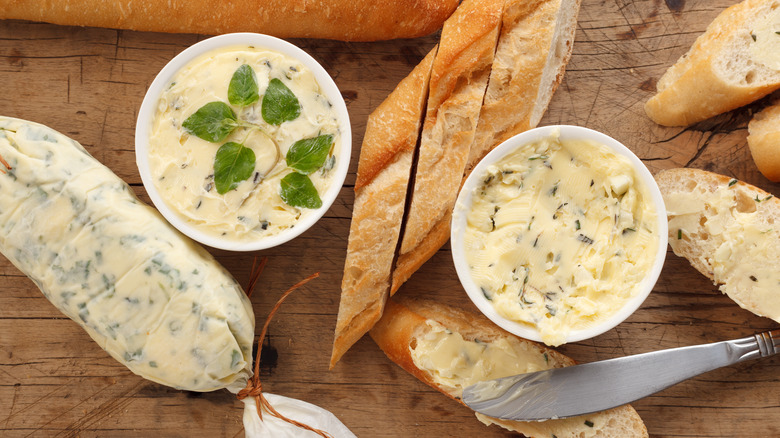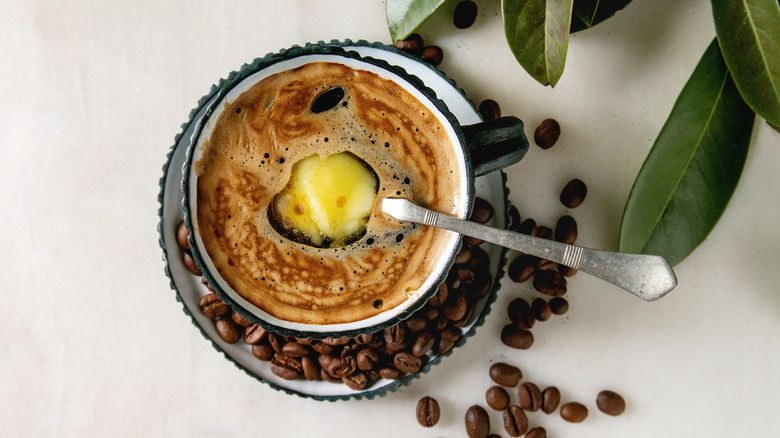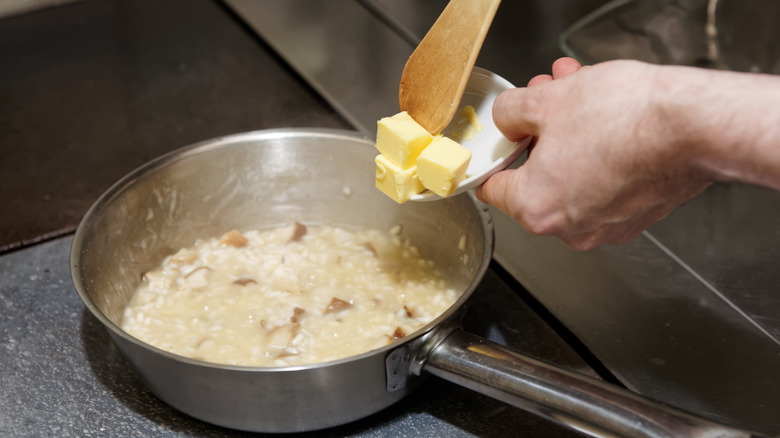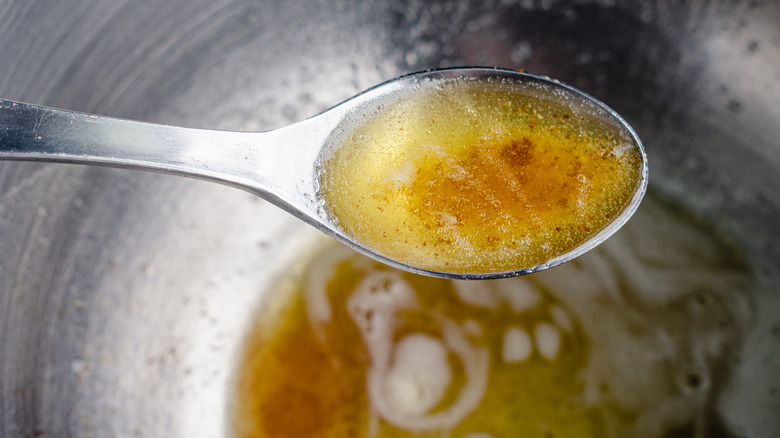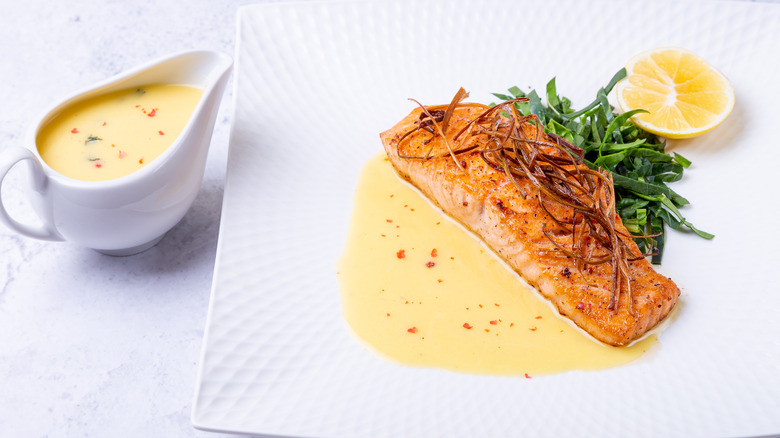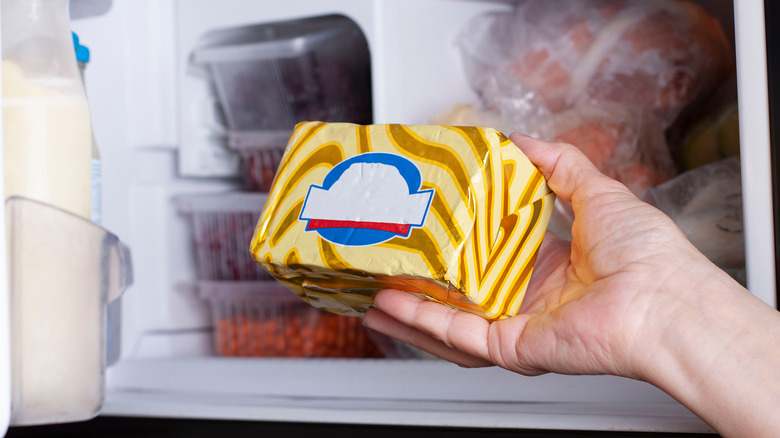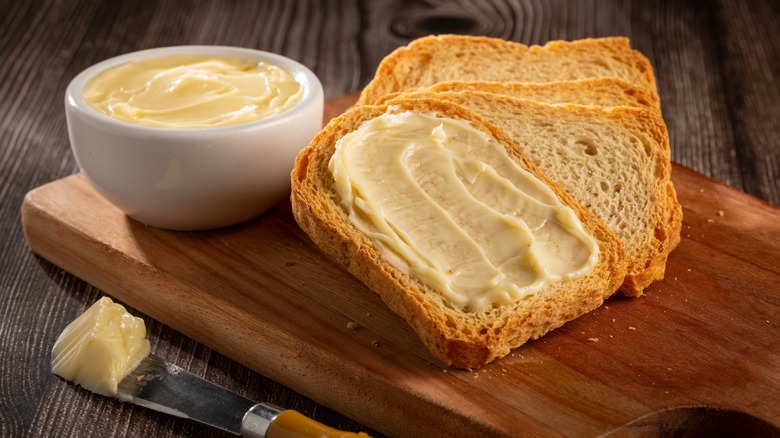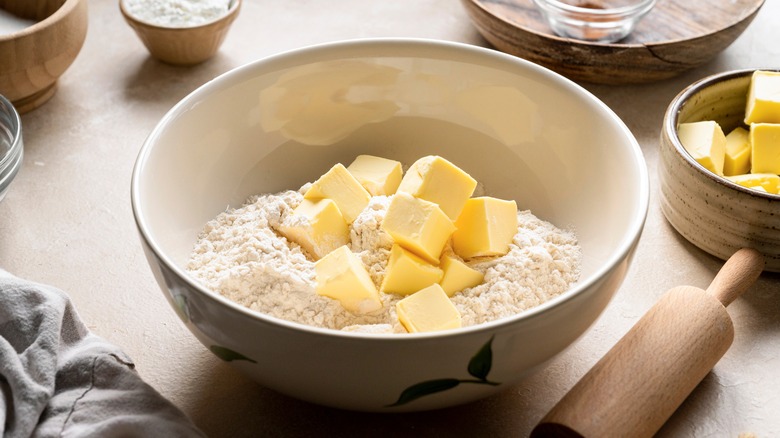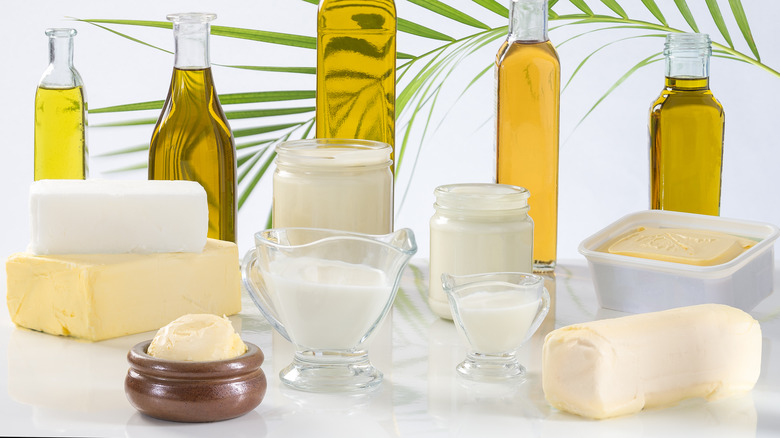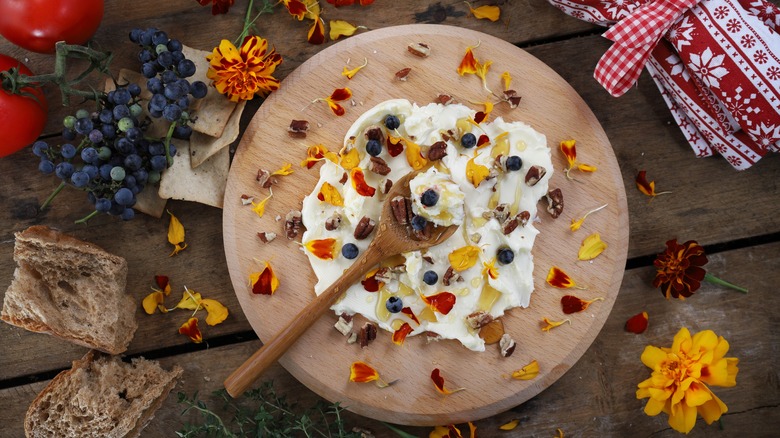12 Butter Hacks You'll Wish You Knew Sooner
Butter makes everything better. It creates those endless layers in a croissant and enables your pie crust to get that flaky, crumbly texture. A dollop of butter on your pancakes, along with a splash of syrup, makes a melting symphony of flavors, and adding just a pinch of butter to your sauce will do wonders for the taste.
Whether it plays the leading or the supporting role, this milk product has long become a household staple and kitchen essential, not to mention key in professional kitchens and pastry shops. If you've ever wondered why everything tastes better at restaurants, the answer is in the butter. Not only does it impart creaminess, but it also provides that milky flavor in purées, frostings, and pastry creams.
It seems that we simply can't do without butter, and just when you thought that there is nothing better than butter, which we totally agree on, here comes the surprise: This list of hacks will show you some new ways to use and improve this majestic product for a better butter experience.
Use it to make ghee
Butter is great on its own, but you can use it to make something that could be a step up from the original. Ghee, as explained by MasterClass, is just a variety of clarified butter that is extensively used in Indian cuisine. Ghee is made by heating butter and then slowly simmering it until the milk solids separate from the liquid. Stopping at this stage will give you clarified butter, but leaving the butter to simmer for a bit longer will make the bits turn golden and attain a nutty aroma. The final step is to separate the liquid from the solids, and you'll get a nice portion of ghee. Leaving these solids in the butter will give you brown butter, but we'll come to that component later.
If ghee is formed from butter, what exactly makes it different? According to Healthline, as water and milk solids are removed from ghee, you can easily store it at room temperature without fear it will spoil. It could also be a more suitable option for those who can't tolerate lactose (because milk solids have been removed). In culinary use, ghee has a higher smoke point, meaning that it might be a better option for cooking at higher temperatures.
Grate frozen butter for easier use
Grating butter has been present in culinary circles for some time now, but if it somehow slipped off your radar, read along to find out why grating butter is possibly one of the greatest cooking hacks and how it can save you time and that cake you're currently assembling. Though graters have a completely different use, mainly for veggies and fruits, in this case, they can be a lifesaver when you don't have the patience to wait for the butter to melt, be it for spreading it on bread or for making desserts. Life Hacker explains that you can easily take frozen or chilled butter and finely grate it into shreds. The thin butter threads are smaller and melt faster, so you can scrape them directly on top of the bread and then gently spread them with a knife.
You can also follow the trick when it comes to frosting and icings, as grated butter will quickly melt and easily incorporate with cream cheese to create a silky smooth cake frosting (via Mountain Kitchen). You can use any hand grater, depending on what you are making. A coarse grater will do a great job, especially with frozen butter, but if you need thinner strands, feel free to use finer graters. Even a zester could be a suitable tool.
Season it to make your version of compound butter
Butter makes a great playing ground for additional flavors. The French have long cracked this hack by creating beurre composé, or compound butter, a combination of butter and several complementary ingredients -– think of herbs and spices -– that can be added to dishes for extra creaminess and new flavor components.
The first version of compound butter went by the name beurre maître d'hôtel and was traditionally made by combining butter with parsley and lemon juice. It was assembled tableside and then served on top of steaks, whose heat would then cause it to melt into some buttery herbal goodness. Surprisingly, compound butter is really easy to make. All it takes is some softened butter that is mixed with your favorite herbs, spices, or condiments (via San Diego Union Tribune).
The varieties of compound butter and ways to use them are virtually endless. Some traditional options include serving it on steaks, poultry, or salmon, but you can also smear it on top of baked corn on the cob. And don't stop at savory, as compound butter also works in sweet combinations. It would make a great pairing with vanilla, honey, and cinnamon. Add some nuts to the mix, and you've got a delectable spread ideal for bread, muffins, or waffles (via Webstaurant Store).
Use it to make bulletproof coffee
You must've already heard about bulletproof coffee -– the caloric coffee version with added fat that is supposed to make you feel energized and full for longer. The drink is also known as butter coffee, and as you correctly assume, it is made with butter. Bulletproof coffee was first promoted by an American entrepreneur Dave Asprey, and it caused quite a craze among those who follow the LCHF (low carb, high fat) diet (via BBC Good Food).
As Asprey shared with Bloomberg, he was inspired by a tea-based drink with yak butter that he had in Nepal. Upon returning to the U.S., he tried to recreate the drink by using coffee and finally tweaked his brew with high-quality grass-fed butter and coconut oil to create a drink he was satisfied with. This 450-calorie bomb is intended to act as breakfast, and it is supposed to increase satiety. Bulletproof coffee is quite simple to make; blend coffee, butter or ghee, and MCT oil (similar to refined coconut oil) until you get a nice frothy blend, per Bulletproof.
It still needs to be determined whether bulletproof coffee can improve your health or make you feel energized. Research published in the Journal of Nutrition and Metabolism in 2021 studied the effects of caffeine and MCT on ketogenesis, and the conclusion was that though caffeine did encourage ketogenesis, more research is needed to clarify how bulletproof coffee and similar health trends might affect overall health.
Add butter as a finishing touch in sauces and savory dishes
Hopefully, you've already realized that you should always have a stack of butter at hand to quickly whip up cookies or cupcakes when those sugar cravings kick in, but don't limit the use of this fabulous product only to sweets and desserts. Butter is a neutral ingredient that can improve the flavor and texture of savory dishes and sauces.
In Italian cooking, butter is one of the prerequisites for a successful risotto or a creamy polenta. As explained by La Cucina Italiana, the technique of adding butter at the end of the cooking process is called mantecare –- an expression that stems from Spanish and has no equivalent in English –- and it involves adding very cold butter to the dish, and then vigorously stirring or swirling the saucepan to incorporate it and get a velvety smooth result. This step should be done when you take the pan off the heat.
Similar techniques exist in other national cuisines. Cooks Illustrated tested the traditional French practice of adding small pieces of chilled butter to wine- and vinegar-based sauces to create a smooth, buttery emulsions standard for French cooking. To get the best results, the authors suggest tossing in small amounts of chilled butter and continually whisking between each addition.
Make it into flavorful brown butter
Brown butter is the superior butter version, or "melted butter on steroids," as it is charmingly described at King Arthur Baking Company. It is made by slowly heating butter on the stove and then allowing it to simmer until the milk solids separate, and the butter attains a nice amber color. The process that causes the color change and enables the development of malty, caramel-like notes in brown butter is the famous Maillard reaction, the same one that delivers flavor to dark bread crust and the caramel layer on seared steaks.
The process of browning butter can be slightly tricky to master as the solids tend to turn from golden to burnt fast, but brown butter adds such complexity that it is worth trying to make your version and spending some time carefully watching a bubbly pot of butter. Always make sure to brown the butter in the light bottom pans, as it will be easier to control and assess the level of browning.
Brown butter is not only reserved for cookies and cakes but comes through best in buttery baked goods such as pies or cookies. King Arthur Baking Company also mentions pairing brown butter with fish, veggies, and popcorn. Whether it is used in desserts or savory dishes, brown butter will always deliver complexity and that delicious nutty flavor, so use it wherever you find it suitable.
Use it to create various butter-based sauces
As mentioned, butter works great as a creamy addition to sauces and savory dishes, but it can also make a fantastic sauce base. The idea again comes from French cuisine, which is apparently very butter-oriented. Beurre blanc (white butter) is the classic French butter sauce traditionally made with sautéed butter, shallots, white wine, and white wine vinegar. Seasonings include salt and cayenne pepper. Beurre blanc is usually used with fish, providing a neutral base that can be tweaked by adding stock, herbs, spices, or even vegetables (via The French Cooking Academy).
Along with this classic sauce, The Nibble lists other butter-centered French sauces that might be a welcomed addition to your cooking. Beurre rouge sauce is the red-colored variety of the traditional version made with red wine and red wine vinegar. Beurre noisette, which translates as hazelnut butter, is essentially a fancier name for brown butter -– hazelnut refers to the distinctive nuttiness typical for brown butter. In French cuisine, brown-butter sauce accompanies meat and fish, but it also works with fruit, vegetables, and pasta dishes. Beurre noir (or black butter) is a sauce similar to brown butter but also includes vinegar or lemon juice. You can further play with seasonings and herbs.
Freeze it for later use
This next hack will prevent those emergency runs to the grocery store when you realize that the amount of butter you have won't be sufficient for a batch of chocolate chip cookies you promised to bake. This might surprise you, but butter freezes very well. So next time, don't just grab one stick or a block of butter, but grab a handful, keep one in the fridge, and store the rest in the freezer. To use it, thaw it inside the fridge or on the countertop. Dan Souza from America's Test Kitchen shared with Business Insider that a freezer is an excellent place for butter as it's chilly and dark enough to stop the butter from going bad and keeps it fresh for much longer.
You can freeze the butter in whole blocks or sticks, but you can also easily portion it and then use the smaller pieces directly from the freezer whenever you want to put them straight into warm, savory dishes -– think of the previously mentioned risottos and sauces. In whichever form you freeze it, don't forget to tightly seal the packages, as you don't want that unpleasant freezer smell to penetrate the butter.
There are easier ways to soften butter
Everyone has at least once experienced that dreadful moment when you are about to start mixing the cake and realize that all you've got is inadequate, fridge-temperature butter. There are quick and easy solutions to this problem. Try the old-fashioned microwave trick for a quick way out, but be careful as butter quickly melts, and you might get a puddle within minutes. Microwaves also might not soften the butter equally, so use the technique sparingly and only for butter that won't go into cakes. For other solutions, Land O'Lakes recommends dicing the butter -– smaller pieces will soften faster -– or using a rolling pin on butter that's sandwiched between two sheets of parchment paper. Don't forget that grating hack that also makes smaller pieces come to room temperature faster. Aa an alternative, try one of the latest TikTok trends that suggests using a warm glass to cover the butter stick and then waiting for around seven minutes to get that soft butter perfection.
Using softened butter as a bread spread is important, but correctly softening the butter for cakes is crucial for successful results. Sally's Baking Addiction explains that the ideal butter temperature for baking is around 65 F. If the butter is too soft, it can't incorporate enough air, and the cake might end up being too heavy and dense.
Always go for unsalted butter when making desserts
Salted butter is great for many things and makes for a fantastic all-round table butter, but it might not be the best option for baking. One of its characteristics is that it stays fresh for longer (salt acts as a preservative), but this means that maybe you're not buying the freshest package on the store shelf. Though this might subtly affect the taste, salted butter can cause more significant unbalance in your finished baking products.
As Sarah Carey from Martha Stewart Living explained, it's difficult to guess how much salt is in a portion of salted butter. If you want to swap unsalted butter for a salted version in sweet bakes, and even if the recipe calls for some salt, it's almost impossible to get the correct ratio, which can alter the flavor of any baked product. Also, salted butter varieties usually have a higher water percentage. Water can affect proper gluten development and ruin the texture, which is especially important for pastries, cakes, and cookies. Overall, when it comes to baking, it's best to follow the recipe in detail and avoid any possible baking catastrophes.
Don't forget that not all butter is created equal
Butter is an international staple, but it can slightly differ depending on the style and place it was produced, so when you want to use it for baking, don't just take any butter you see on the shelf. King Arthur Baking Company explains some of the differences, and the first thing worth pointing out is that European-style butter and American butter are not the same. European versions usually have a higher fat percentage, typically between 82% and 86%, whereas American varieties usually stay around 80%. This means that American butter has more water, and as your pastries bake, this water will become steam that will deliver those flaky pastry layers.
The Martha Stewart website also mentions the difference in flavors between these two main butter styles. As clarified, European butter is traditionally fermented to attain a subtly sour taste that will lend more flavor to baked goods. It is suggested that American butter works great in standard baking, but when smearing butter on bread or dousing your popcorn in it, it might be better to go for the flavorful European style. Whenever in doubt, think of how you want to use the butter, read the label, and make sure to use this hack to your advantage.
There are more creative ways to serve butter
Butter makes a great pairing with most quick bites and party snacks, so you should always serve it along with other dips and condiments. What you should reconsider is the way you're serving butter. In 2022, the internet became obsessed with the latest viral trend: the butter board. If you've never seen it before, it is an idea that mimics a charcuterie board, but it is made with butter. Softened butter is spread on a wooden board, seasoned, and served with chunks of bread on the side. The guests are then encouraged to scoop the butter with the bread or crackers. The idea sounds so simple and genius that it's hard to believe it took this long for it to catch on. The technique was made famous by Justine Doiron, an author and recipe developer at Justine Snacks, who first promoted the idea with an Instagram video, though she credits Joshua McFadden as the original creator. Butter boards are perfect as they are attractive and easy to assemble, and you can use them as a great flavor canvas for savory and sweet toppings (via USA Today).
If butter boards are not your thing, try the advice given by the legendary Alex Guarnaschelli. She recommends a simple hosting trick that will delight your guests. Just sprinkle some salt and pepper on a stick of butter, and serve it at room temperature. In that way, every portion will include some seasoned buttery goodness.
